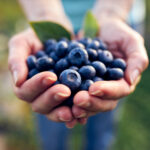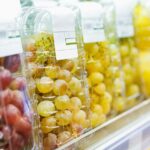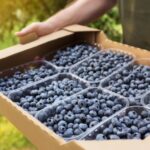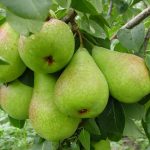Agronometrics in Charts: The 2024 California avocado harvest may be the smallest since 2009 - USDA

In this installment of the ‘Agronometrics In Charts’ series, Sarah Ilyas studies the state of the California avocado season. Each week the series looks at a different horticultural commodity, focusing on a specific origin or topic visualizing the market factors that are driving change.
According to the California Avocado Commission (CAC), the state is expected to produce 208 million pounds in the 2024 season, compared to 237 million pounds produced in 2023. If realized, the avocado harvest in California in 2024 would be the smallest since November–October of the 2008–09 MY (Marketing Year) and the second smallest since the late 1970s. The decline in production is attributed primarily to substantial rainfall experienced during an El Niño year, which slightly postponed the season's commencement. “After all this rain, what is needed is warm days to help the avocados on the trees to grow and for the set the following year,” said Terry Splane, vice president of marketing for the California Avocado Commission.
 Source: USDA Market News via Agronometrics.
Source: USDA Market News via Agronometrics.
(Agronometrics users can view this chart with live updates here)
“As of the end of March, only about 7% of this year’s California avocado crop has been harvested, but in April it is expected to increase significantly,” said Splane. “The sunny weather we’ve had lately in the California avocado growing regions is very welcome after so much rain and should help the fruit size up.” Peak availability of California avocados is expected to occur from April into July, with smaller volumes in summer.
Hass avocados are anticipated to comprise 196 million pounds (94 percent) of California's total avocado production in 2024; the remainder will be accounted for by Lamb, Gem, and other varieties. California is responsible for the production of around 90 percent of all avocados produced in the United States annually.
The majority of avocado production in California is concentrated in southern counties. According to the 2022 Census of Agriculture, avocado-bearing acreage in California was recorded at 45,970, the smallest figure since the mid-1970s. Ventura and Santa Barbara, the top-producing coastal counties in California north of Los Angeles, increased avocado cultivation by nearly 4,000 acres between 2012 and 2022, while San Diego County reduced its avocado cultivation by 6,919 acres. High water costs and urbanization are two elements that have contributed to the deterioration in San Diego County.
2023 set a record for import volume: The United States imported a record 2.78 billion pounds of fresh avocados in 2023, with Mexico, the leading producer, supplying 89 percent of the volume. A total of 133.7 million pounds of Hass-like organic avocados and 2.56 billion pounds of conventional avocados constituted 97 percent of the overall volume of fresh avocados. Non-Hass avocados comprised an estimated 3 percent of the total volume of fresh avocado imports (83.1 million pounds), with the Dominican Republic being the primary supplier.
 Source: USDA Market News via Agronometrics.
Source: USDA Market News via Agronometrics.
(Agronometrics users can view this chart with live updates here)
Fresh avocado imports ranked second in value among U.S. fresh produce imports in 2023, behind tomatoes, with a total of nearly $3 billion. This spring marks the debut of the "What’s Inside a California Avocado" marketing program by the California Avocado Commission.
The advertising and social media initiative shines a spotlight on the unique attributes of California avocados by taking viewers directly to the groves, highlighting the deep-rooted connections of growers, and emphasizing the commitment to locally sourced and sustainably farmed produce. Filmed amidst the picturesque California avocado groves in San Diego and Ventura counties, the campaign features two multi-generational families of California avocado growers, namely the Serratos and the Lambs.
Splane elaborated on the campaign's intent, stating, “This campaign is about confidently leaning into what makes California avocados different and special compared to other origins.”
In our ‘In Charts’ series, we work to tell some of the stories that are moving the industry. Feel free to take a look at the other articles by clicking here.
All pricing for domestic US produce represents the spot market at Shipping Point (i.e. packing house/climate controlled warehouse, etc.). For imported fruit, the pricing data represents the spot market at Port of Entry.
You can keep track of the markets daily through Agronometrics, a data visualization tool built to help the industry make sense of the huge amounts of data that professionals need to access to make informed decisions. If you found the information and the charts from this article useful, feel free to visit us at www.agronometrics.com where you can easily access these same graphs, or explore the other 21 commodities we currently track.














































